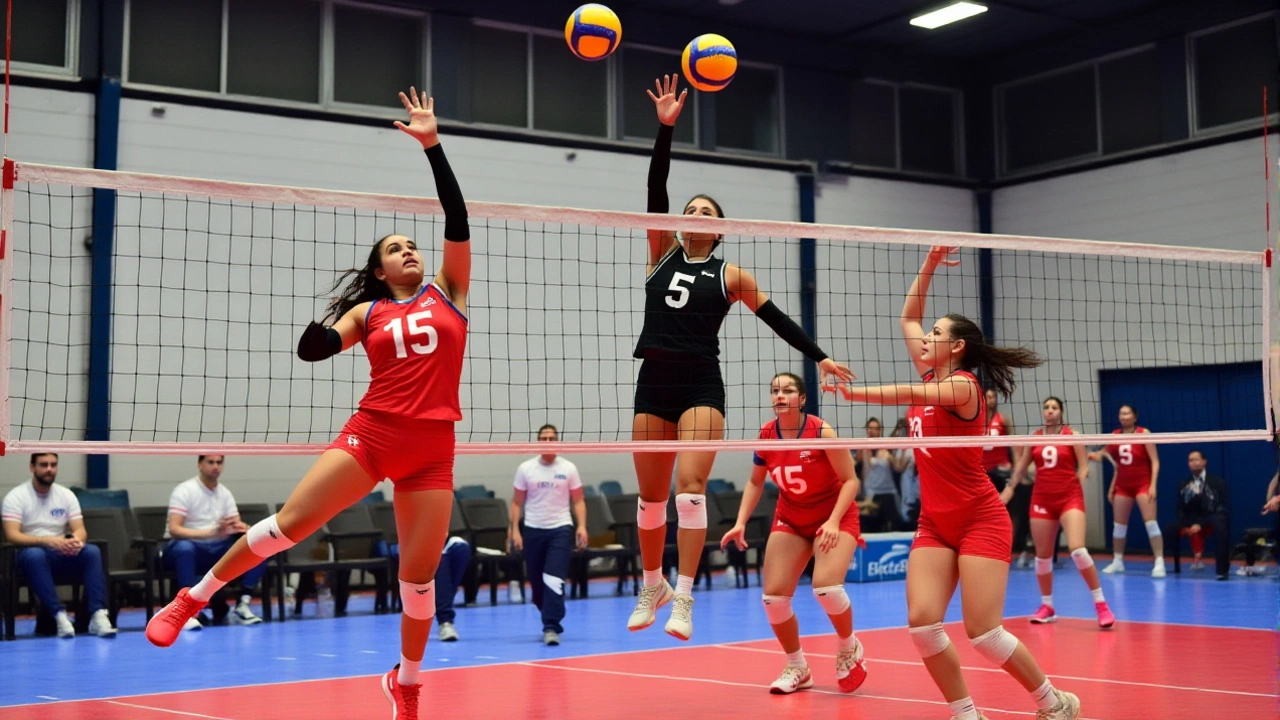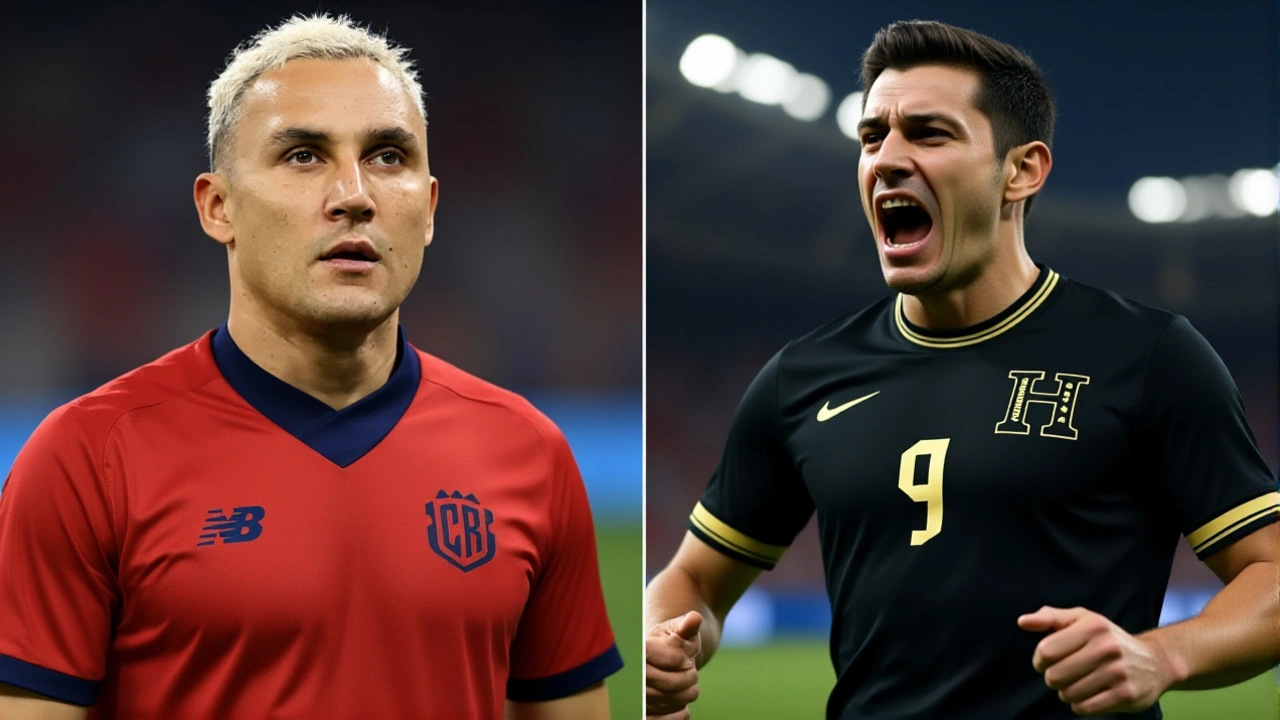The final whistle blew at Estadio Nacional de Costa Rica in San José on Wednesday, November 19, 2025, and silence followed—not the kind of quiet that comes from exhaustion, but the hollow stillness of dreams shattered. Costa Rica and Honduras, two Central American giants with proud footballing histories, left the pitch with nothing. No win. No goal. No path to the 2026 FIFA World Cup. Just a 0-0 draw that sealed their fate: both out. No playoffs. No redemption. Just the cold math of group standings and the crushing weight of what could’ve been.
A Rivalry That Ended in Heartbreak
This wasn’t just another qualifier. It was the Clásico Centroamericano—a fixture steeped in decades of tension, passion, and occasional violence. On paper, Costa Rica (FIFA #54) held the edge over Honduras (#75). But form meant little here. Both teams had clawed through two rounds of qualifiers only to arrive at this final, brutal chapter. The winner would likely finish third and book a ticket to the World Cup. The loser? A one-way ticket home. And if they drew? Both would fall. Keylor Navas, the 38-year-old veteran who’s been Costa Rica’s backbone for over a decade, made a stunning fingertip save in the 67th minute to deny a looping header from Honduras’s Alexander Lopez #10. The crowd gasped. The broadcast cut to a close-up of Navas’ face—no celebration, just grim focus. He knew. We all knew. This wasn’t about one save. It was about the entire journey.The Lineups and the Missed Chances
Honduras lined up in a 3-4-3 under manager Reinaldo Rueda, a tactical mastermind who’d guided them to the 2010 World Cup. Goalkeeper Edrick Menjívar held firm, while defenders Andy Najar and Marcelo Santos held the backline like a wall. In midfield, Kervin Arriaga and Jorge Álvarez pressed hard, but lacked creativity. Up front, Lopez was isolated, often left to chase shadows. Costa Rica fielded a more experienced side. Alongside Navas, veteran Celso Borges and Bryan Ruiz—who retired from international duty just weeks after this match—tried to stitch together chances. Francisco Calvo #15, who committed a reckless foul at the 39’ mark, was a constant threat on set pieces but struggled in open play. Substitutions came thick and fast: R. Quioto entered at 75’, C. Pineda at 65’, and K. Vargas was pulled after a foul at 64’. Nothing worked. The match clocked 17 fouls. Two yellow cards. No shots on target for either side in the second half. The final whistle came after two minutes of stoppage time. No celebration. No tears. Just numbness.
Why This Matters Beyond the Scoreline
The 2026 FIFA World Cup is the first to feature 48 teams. For CONCACAF, that means three automatic spots and one playoff berth. The top three teams in the final group of eight would qualify directly. The fourth would face a team from Asia or South America in a one-off playoff. Costa Rica and Honduras entered this final matchday tied on points. A win would’ve vaulted either into third. A draw? A death sentence. And so it was. Panama finished third. Jamaica, surprisingly, clawed into fourth and will now fight for a playoff spot. The two Central American rivals? Left behind. It’s the first time since 2006 that neither nation will be in a World Cup. For Costa Rica, whose 2014 run to the quarterfinals remains a national highlight, this is a collapse. For Honduras, it’s the latest in a string of near-misses since their 2010 appearance.What’s Next for Central American Football?
The fallout is already beginning. In San José, fans burned jerseys outside the stadium. In Tegucigalpa, protests erupted over the coaching staff’s tactics. Rueda’s future with Honduras is uncertain. The Costa Rican Football Federation has already announced an independent review of its youth development pipeline. The bigger question: How did two teams with such rich footballing traditions fall so far? Partly due to inconsistent leadership. Partly due to aging squads. But mostly, it’s because the region’s football culture has become reactive, not proactive. Too many clubs prioritize short-term results over long-term structure. Too many players leave for Europe too early without the mental tools to handle the pressure. This isn’t just about one match. It’s about a generation of players who never learned how to win under pressure.
What’s Next?
The next cycle begins in 2029. But the real work starts now. Both federations must rebuild. For Costa Rica, that means investing in academies in the Pacific coast towns where talent still thrives. For Honduras, it means stabilizing leadership—no more firing coaches after one bad result. Meanwhile, fans will have to wait. And hope. Again.Frequently Asked Questions
How did the 0-0 draw eliminate both Costa Rica and Honduras?
Before the match, Costa Rica and Honduras were tied on points in the CONCACAF final round. A win would’ve put either team in third place and into the World Cup. A draw meant both remained stuck in fourth and fifth, behind Panama (who won their match) and Jamaica (who finished fourth). Only the top three qualify automatically; fourth gets a playoff. With neither team winning, both missed out entirely.
Who were the key players in the match?
For Honduras, Alexander Lopez #10 led the attack and had the clearest chance, saved by Keylor Navas. Edrick Menjívar held the goal steady. For Costa Rica, Keylor Navas was heroic in goal, while veteran Celso Borges and Bryan Ruiz tried to create rhythm. Francisco Calvo #15, though aggressive, was a liability in possession and committed a costly foul at the 39’ mark.
Why is this loss so devastating for Costa Rica?
Costa Rica reached the World Cup quarterfinals in 2014 and qualified for every tournament since 1990. Missing 2026 is their first absence since 2006. The country’s entire football identity is built on punching above its weight. This failure has triggered national soul-searching, especially among younger fans who’ve never known a World Cup without their national team.
What does this mean for future CONCACAF qualifiers?
The result exposes a growing gap between the top CONCACAF teams (USA, Canada, Mexico) and the rest. Teams like Jamaica and Panama are rising, while traditional powers like Honduras and Costa Rica are stagnating. Future qualifiers may see even more upsets, and FIFA’s expansion to 48 teams won’t help if nations don’t invest in youth development and tactical consistency.
Will Keylor Navas play again for Costa Rica?
Navas officially retired from international duty in December 2025, just weeks after this match. He called it a “bittersweet end,” saying he couldn’t bear to see his teammates struggle without him. His legacy as Costa Rica’s greatest goalkeeper is secure—but his absence leaves a massive void in leadership and experience for the next generation.
How did Honduras’ coaching staff respond after the match?
Reinaldo Rueda, who coached Honduras to the 2010 World Cup, stayed silent for 48 hours after the match. He later issued a brief statement: “We gave everything. But football doesn’t reward effort—it rewards results.” His contract expires in 2026, and the federation has not yet announced whether he’ll return. Fans are demanding a complete overhaul of the technical staff.
